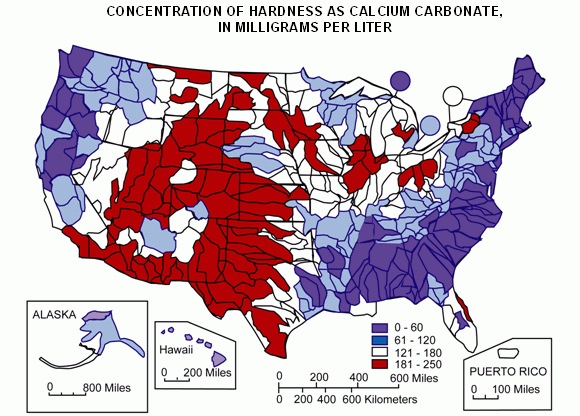When it comes to different pipe types (i.e., polybutylene, copper, galvanized steel pipe, cast iron), each has an overall expected usable life based on their material. But when you look beyond the manufacturers’ data and national averages, location is key.
With over 25 years of industry experience, we know that in certain areas of the United States, piping systems are failing at a faster rate. While nationally the average life of polybutylene (“poly”) pipes is 26 years, in states like North Carolina and Virginia, poly pipes are failing up to ten years earlier. Likewise, for galvanized steel pipes, the average life nationwide is 50 years, but in states like California, we are seeing galvanized pipes fail in as few as 18 years. We have seen some copper pipes in perfectly good shape at 75 years old, while others have sprouted pinhole leaks at only 10 years of age due to the quality of the copper and the corrosiveness of the water. Cast iron pipe is expected to have a usable life of 50 years or more based on manufacturers claims, but there are reports of newly made Chinese Cast Iron that are failing at a much faster rate.
For reasons “why” these certain piping systems have a shorter than anticipated life span in certain regions, it’s important to examine not only those specific geographies, but also any corresponding environmental factors.
One environmental factor impacting the life expectancy of piping systems is hard water. As shown in the USGS map below, based on a study by the National Water-Quality Assessment (NAWQA) program, certain parts of the country have higher amounts of water hardness than others. According to the USGS, water hardness is the amount of dissolved calcium and magnesium in the water.

While hard water is not considered harmful for human consumption, over time it causes scale build up inside pipes and around fittings and components. When this happens, we typically see a reduction in the lifespan of the system, a lowered efficiency of water heaters and an increase in clogged pipes. And, as the scale builds, the inside of the pipe eventually gets smaller, leading to less water flow and lower pressure.
In addition to the data collected by the USGS, Fannie Mae has published a table for the multifamily industry showing the estimated useful life of various building systems and components – including those systems related to plumbing, heating, and cooling.
If you are unsure about the condition of your pipes or the type of piping system within your building, contact us to arrange for a free property evaluation and assessment of your piping system. With proper planning, problems can be identified, financing can be secured and the situation can be rectified with minimal disruption to the lives of your residents.

